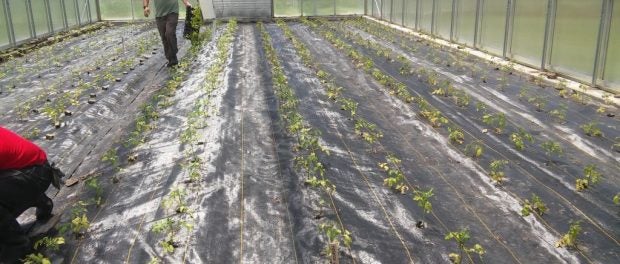Securing the Future of US Agriculture: The Case for Investing in New Entry Sustainable Farmers
A new paper on the case for investing in new entry sustainable farmers explores the obstacles and opportunities faced by beginning farmers using sustainable practices. The article is open access, so please read online, download, and share as you see fit.
Elementa: Science of the Anthropocene
Liz Carlisle, Maywa Montenegro de Wit, Marcia S. DeLonge, Adam Calo, Christy Getz, Joanna Ory, Katherine Munden-Dixon, Ryan Galt, Brett Melone, Reggie Knox, Alastair Iles, Daniel Press
Abstract
Sustainable agriculture is among the most urgently needed work in the United States, for at least three reasons: we face an environmental crisis, a health crisis, and a rural economic crisis. Addressing these pressing crises through sustainability transition will require growing our agricultural workforce: both because the current farm population is aging, and because sustainable agriculture is knowledge-intensive work that substitutes experiential knowledge of farm ecosystems for harmful industrial inputs. Given its social value, sustainable agriculture ought to be a welcoming profession. But at present, US agriculture is decidedly unwelcoming for nearly all who work in it – and it puts new entry and sustainable farmers at a distinct disadvantage. In this paper, we first examine why it is so hard to enter and succeed in sustainable farming. We find that new entrants struggle to gain critical access, assets, and assistance, encountering substantial barriers that stand between them and the land, capital, markets, equipment, water, labor, and training and technical assistance they need to succeed. Secondly, we review promising policy and civil society interventions targeted at addressing these barriers, nearly all of which have already been piloted at the local and state levels or through modest public funding. These interventions are most effective, we find, when they are linked up through robustly governed networks to provide “wraparound” coverage for new entry sustainable farmers. Such networks can help patch together complementary sources of support (e.g. federal, state, local, NGO, cooperative) and synergistically address multiple barriers at once. Finally, we propose additional interventions that are more aspirational today, but that could offer important pathways to support new sustainable farmers in the longer term.
DOI: https://doi.org/10.1525/elementa.356






 Your Privacy Choices
Your Privacy Choices
Leave a comment